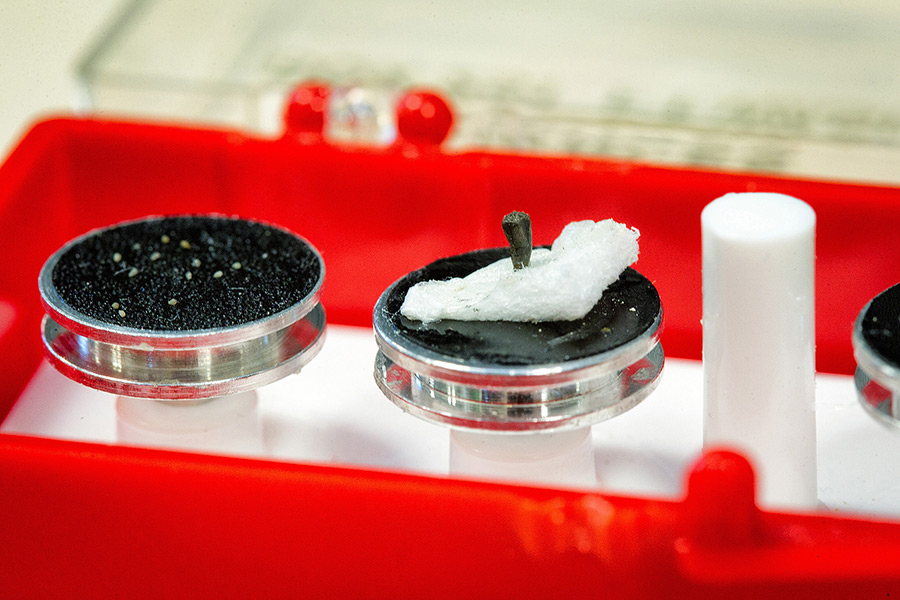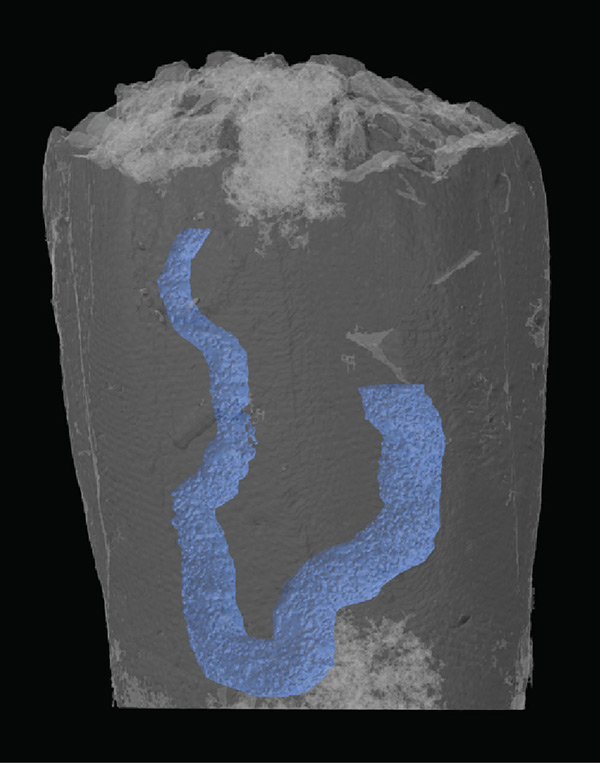BRISTOL, ENGLAND—The inner workings of a tiny fossil have been studied using X-ray microscopy, revealing evidence of its digestive system for the first time.
Researchers from the University of Bristol in England, Appalachian State University, the University of Tennessee, Knoxville and the Paul Scherrer Institute analyzed the unique fossil specimen using high-energy X-rays at the Swiss Light Source in Switzerland.
Their study “Early post-metamorphic, Carboniferous blastoid reveals the evolution and development of the digestive system in echinoderms” has been published in the London-based journal Biology Letters. View study online
The fossil under study is a “primitive” relative of modern sea urchins and starfish and is part of a major group of marine invertebrates called echinoderms.
The results of X-ray imaging prove that the fossil represents an early developmental stage of an extinct group known as blastoids. It can therefore shed light on the early evolutionary history of echinoderms.
Lead author Imran Rahman, a palaeontologist in Bristol’s School of Earth Sciences, said, “We used a particle accelerator called a synchrotron to image the fossil in 3D. This allowed us to create a digital reconstruction of its internal anatomy.”
Co-author Johnny Waters, a professor in invertebrate paleontology at Appalachian, added, “We were very surprised to find evidence of the gut. Nothing like this has ever been seen in fossils belonging to this group before.”
Colin Sumrall, a co-author and assistant professor in paleobiology at the University of Tennessee, Knoxville, said, “The results have highlighted a number of previously unknown differences between the fossil and its living relatives. This has forced us to rethink our ideas about how the digestive system evolved in echinoderms.”
Alberto Astolfo from the Paul Scherrer Institute and a co-author of the research paper helped perform the experiments at the Swiss Light Source. “Synchrotron radiation is the state-of-the-art in X-ray imaging,” he said. This study provides further confirmation that palaeontology is one of the most exciting applications for the technique.”
The work was supported by funds from the United Kingdom’s Royal Commission for the Exhibition of 1851 and the National Science Foundation.
Read about Waters’ use of 3-D imaging to study blastoids at http://www.news.appstate.edu/2015/03/25/blastoids.
About Appalachian State University
As a premier public institution, Appalachian State University prepares students to lead purposeful lives. App State is one of 17 campuses in the University of North Carolina System, with a national reputation for innovative teaching and opening access to a high-quality, cost-effective education. The university enrolls more than 21,000 students, has a low student-to-faculty ratio and offers more than 150 undergraduate and 80 graduate majors at its Boone and Hickory campuses and through App State Online. Learn more at https://www.appstate.edu.
What do you think?
Share your feedback on this story.













